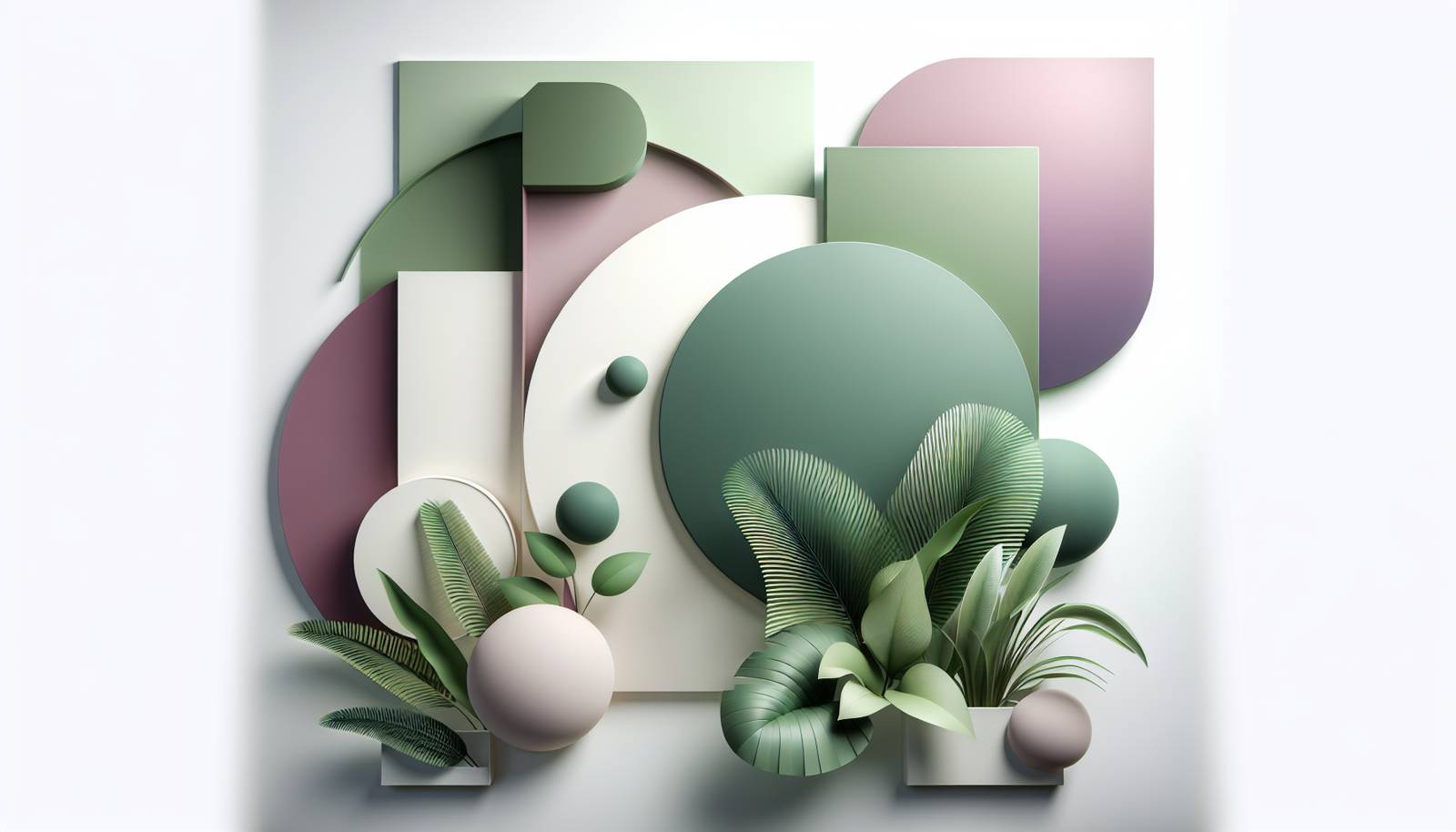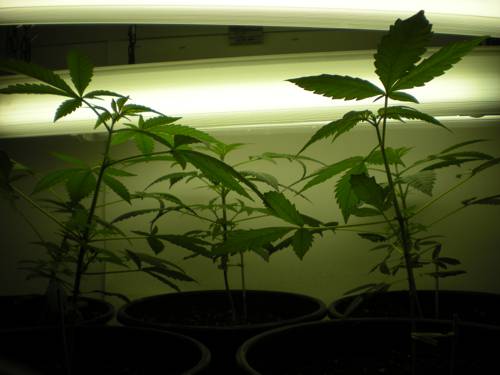
FAQ About Indoor Plant Colors and Growth Lighting

What are LED grow lights and how do they benefit indoor plant growth?
LED grow lights are artificial light sources specifically designed to promote plant growth. They emit light in spectrums that plants can easily absorb, primarily in the blue and red wavelengths which are crucial for photosynthesis. Compared to traditional grow lights, LEDs are more energy-efficient, produce less heat, and have variable spectrum outputs that can be tailored to specific plant needs.

How do different colors of LED grow lights affect indoor plant growth?
Different colors of LED lights serve various purposes in plant growth. Blue light is essential for the early stages of plant growth and helps in developing strong, healthy stems and leaves. Red light is crucial for flowering and fruiting stages. Green light, although less absorbed by plants, can penetrate the canopy, influencing the plant’s structure. Adjusting the color balance can thus significantly influence growth patterns and productivity.

What is the optimal LED light setup for growing leafy greens indoors?
For leafy greens such as lettuce and spinach, an optimal LED light setup would provide a high ratio of blue light to encourage lush, vegetative growth. A light spectrum with about 70% blue and 30% red light is often recommended. Adjustments can be made based on specific growth stages and plant responses to the light spectrum.

Why is blue light important for indoor plants?
Blue light is crucial for indoor plants as it aids in chlorophyll production, resulting in healthier leaves, stems, and overall robust plant development. It promotes compact and thick leaves and plays a significant role in photosynthesis, particularly in the initial growth stages.

Can red LED lights alone be used for indoor plant growth?
While red LED lights can support certain aspects of plant growth, such as flowering and fruiting, using them alone is not ideal for most plants. Plants require a balance of blue and red light for optimal growth patterns. Red light on its own may cause plants to become elongated and weak, as it lacks the growth-regulating properties of blue light.

What is the impact of green light on indoor plants under LED lighting?
Green light is less efficiently used by plants but is not entirely useless. It penetrates deeper into the plant canopy compared to other colors, assisting in photosynthesis in leaf tissues that might not receive direct light. Green light can contribute to plant structure, but should not be the primary wavelength in a grow light setup.

How does LED grow light distance from plants impact growth?
The distance between LED grow lights and the plant canopy is crucial for effective light absorption. Too close, and the lights can cause heat stress and bleaching; too far, and the light intensity may be insufficient. The optimal distance usually ranges from 12 to 24 inches, depending on the light intensity and plant type.

Are full spectrum LED grow lights beneficial for all indoor plants?
Full spectrum LED grow lights can be highly beneficial as they emit a balanced range of wavelengths similar to natural sunlight, suitable for a variety of plant species. This makes them versatile for growing different types of plants, including those that require specific light wavelengths.

What types of plants thrive under LED light with a higher proportion of red wavelengths?
Plants that benefit from a higher proportion of red wavelengths include fruiting and flowering plants such as tomatoes, peppers, and orchids. Red light is instrumental in promoting budding, flowering, and fruiting phases, effectively supporting the reproductive parts of plant growth cycles.

How does the intensity of LED grow lights affect indoor plant health?
Light intensity impacts photosynthesis rates and overall plant health. Insufficient light can lead to slow growth and weak plants, while excessive intensity can cause leaf burn and stress. Finding the right balance based on species and growth stages is critical for maximizing health and productivity in indoor plants.

Can LED grow lights be used to extend daylight hours for indoor plants?
Yes, LED grow lights can be used to extend the photoperiod for indoor plants by supplementing natural daylight, especially in areas with shorter days. This can enhance growth rates and off-season productivity, enabling plants to receive consistent light exposure necessary for sustained growth.

What lighting schedule should be used for vegetables grown indoors?
Vegetables generally thrive with a lighting schedule of 12-16 hours of light per day. This balances energy for growth while allowing adequate rest during the dark period. Adjustments may be required depending on the species and growth stage.

Is it necessary to use different LED grow lights for the seedling and flowering stages?
While not always necessary, using different spectrums for seedlings and flowering stages can optimize growth. Seedlings typically benefit from more blue light for leaf and stem development, while flowering plants require more red light to enhance bud formation and blooming.

How long do LED grow lights typically last compared to other types?
LED grow lights are known for their longevity, often lasting between 50,000 and 100,000 hours depending on usage and quality. This far exceeds the lifespan of traditional incandescent or fluorescent grow lights, making them a cost-effective and sustainable option for long-term indoor plant growth.

Can LED lights impact the flavor of herbs grown indoors?
Yes, the spectrum of LED lights can influence the essential oil production in herbs like basil and mint, thus affecting their flavor. Adjusting the light spectrum to include more blue and red wavelengths can potentially enhance the flavor profile by promoting optimal growth conditions.

What are the advantages of using LED grow lights over fluorescent lights?
LED grow lights offer several advantages over fluorescent lights, including higher energy efficiency, lower heat output, customizable light spectrums, longer lifespan, and reduced environmental impact. These benefits make LEDs a preferred choice for many indoor gardeners.

Do all indoor plants require the same amount of LED light intensity?
No, different indoor plants have varying light intensity requirements. Some shade-loving plants need lower intensity, while sun-loving species like cacti require higher light levels. Understanding the specific light needs of each plant type is crucial for optimal growth under LED lighting.

How can I determine if my indoor plants are receiving too much light from LEDs?
Signs that your plants are receiving too much light include yellowing or bleaching of leaves, leaf curling, and browning leaf edges. If observed, consider moving the lights further away from the plants or reducing the light intensity to mitigate these symptoms.

Can LED grow lights be used for aquaponics or hydroponic systems?
Yes, LED grow lights are highly effective for aquaponics and hydroponics systems as they provide the necessary light spectrum for plant growth without adding excessive heat. Their efficiency and customizable spectrums enhance crop productivity in these water-based agriculture systems.

How does adjusting the light spectrum impact indoor plant morphology?
Adjusting the light spectrum can significantly influence plant morphology. Blue light encourages compact growth with thicker leaves, while red light can promote stretching and flowering. Tailoring the light spectrum based on plant species and desired growth outcomes can thus manipulate plant shape and structure.
